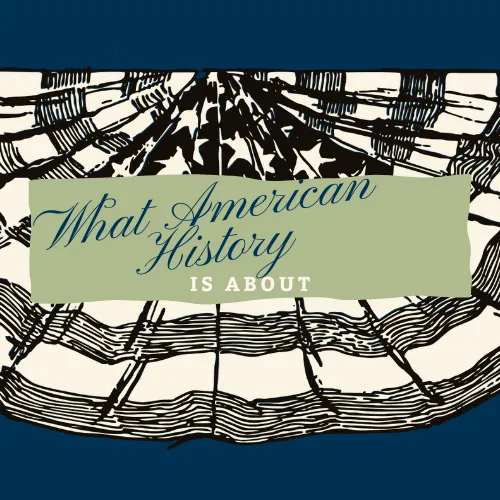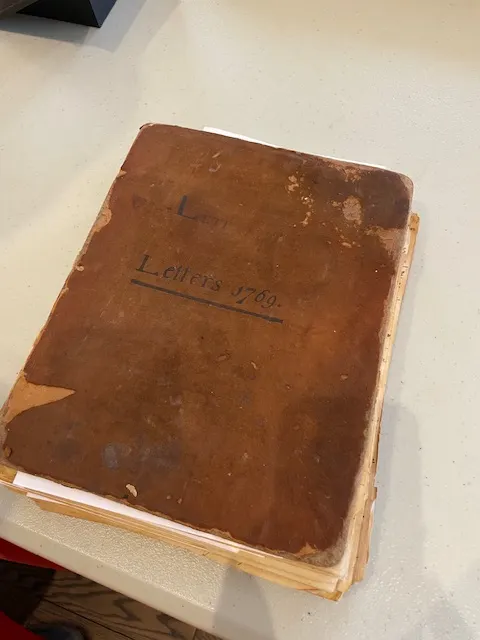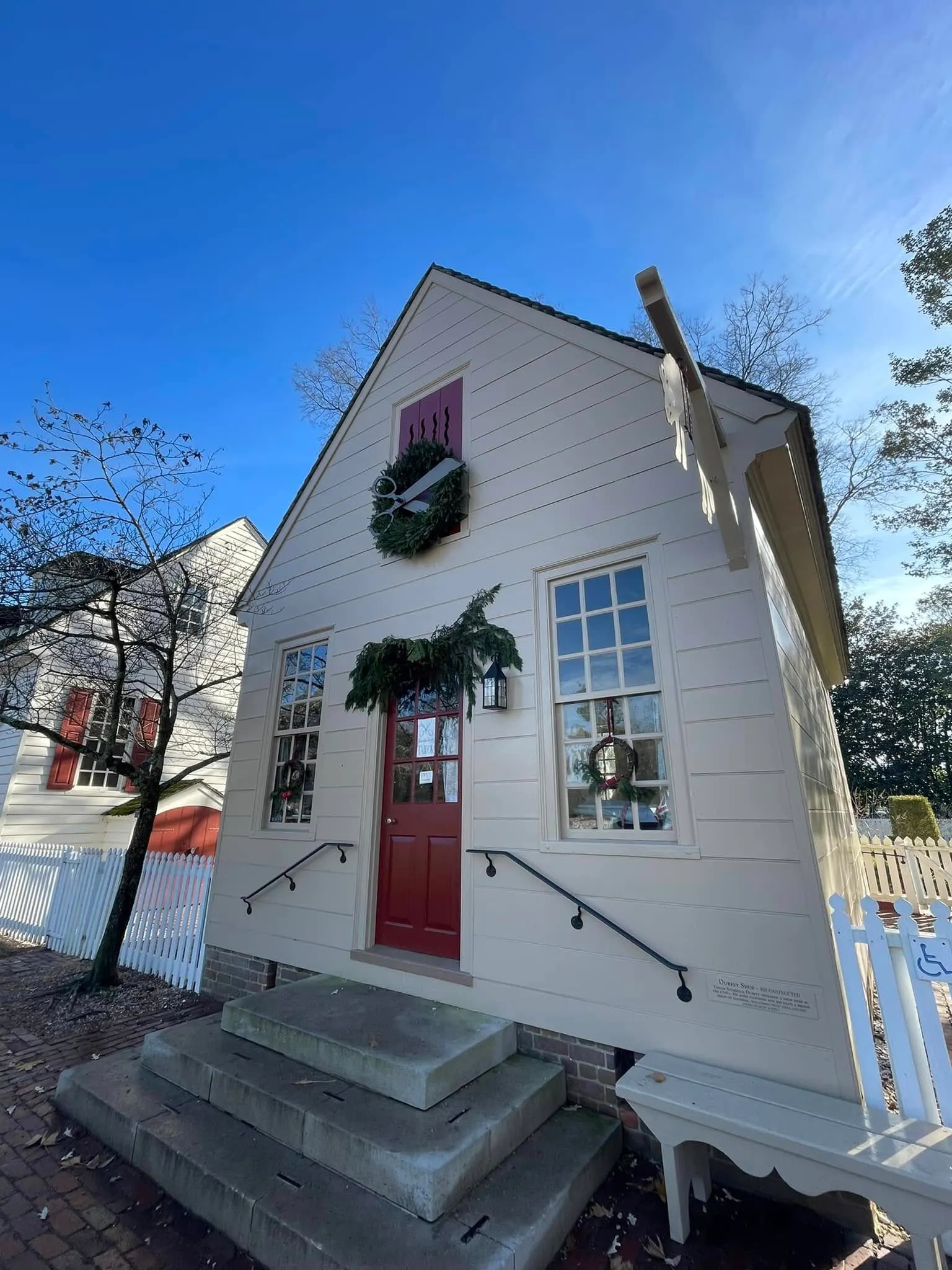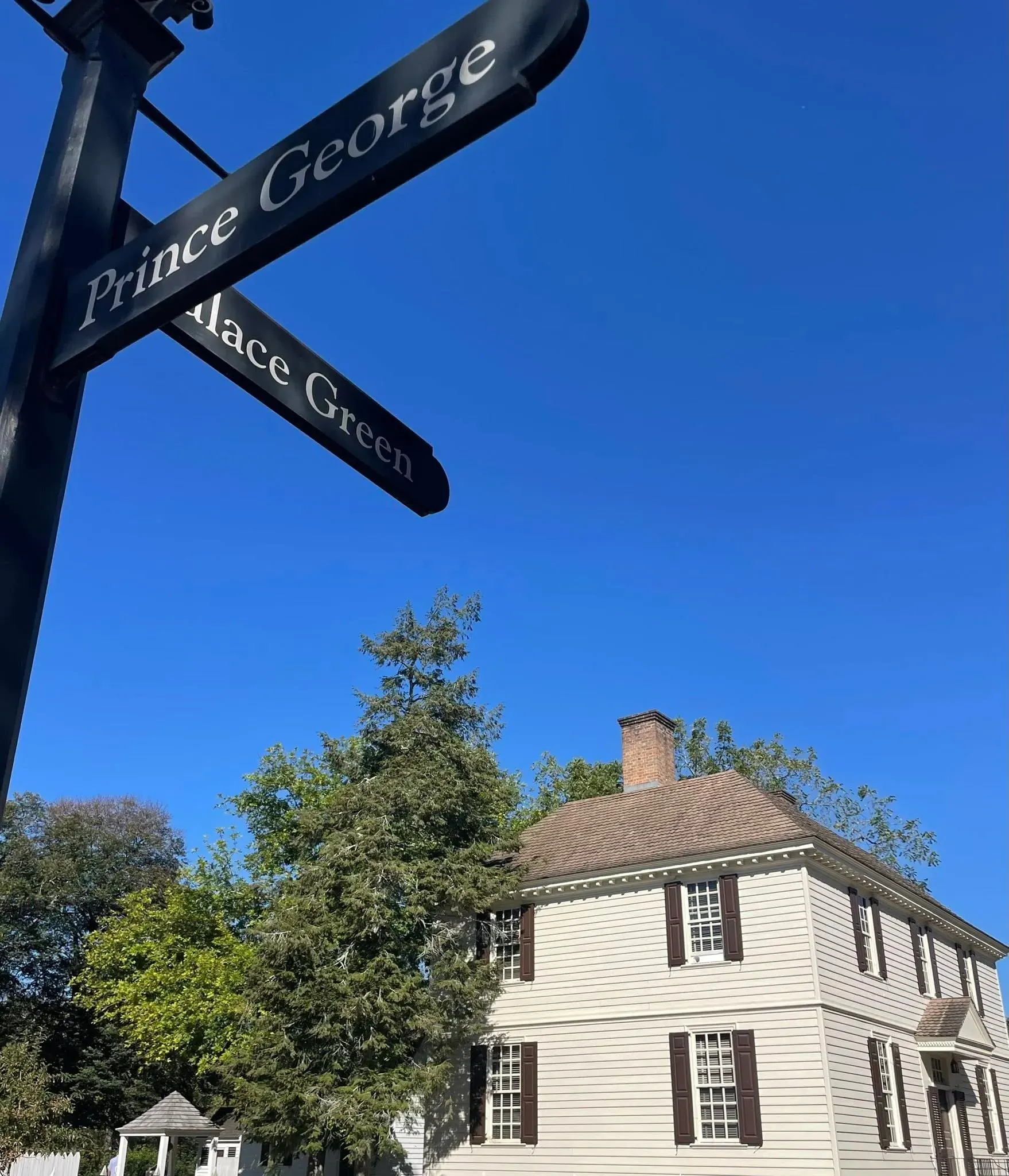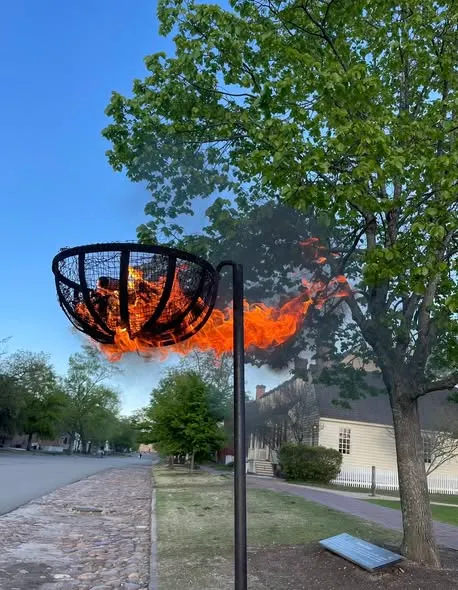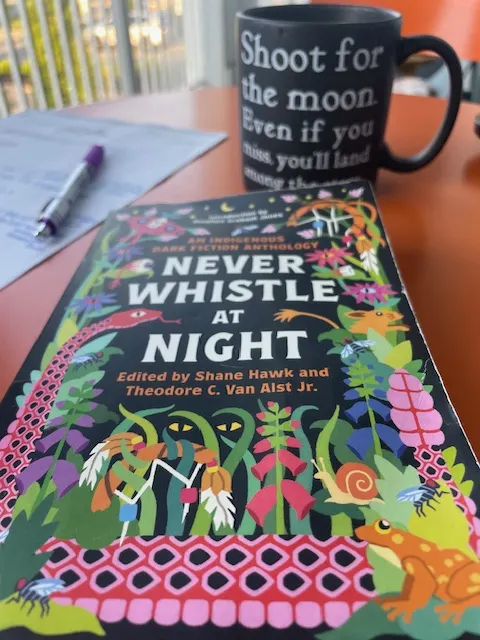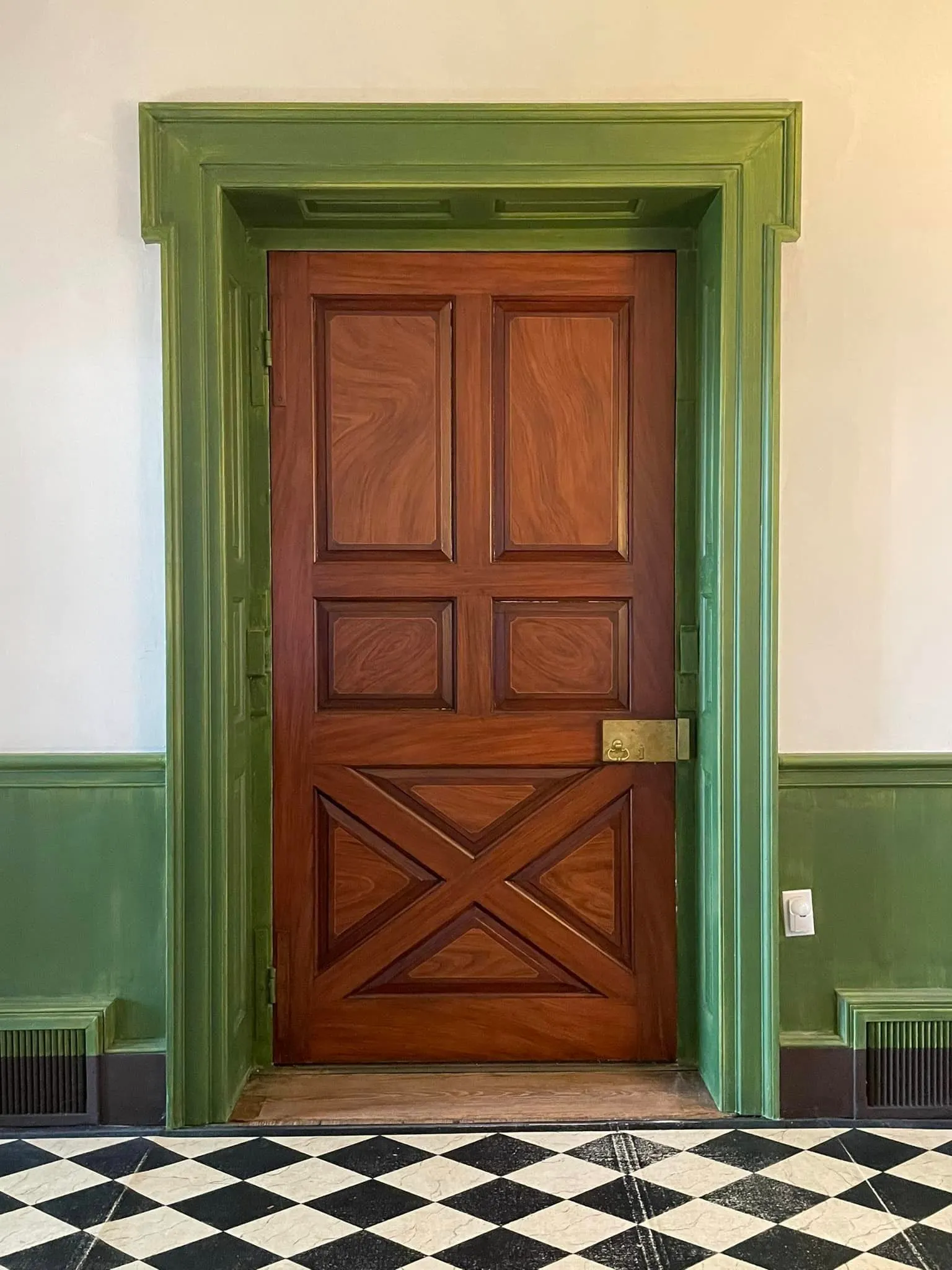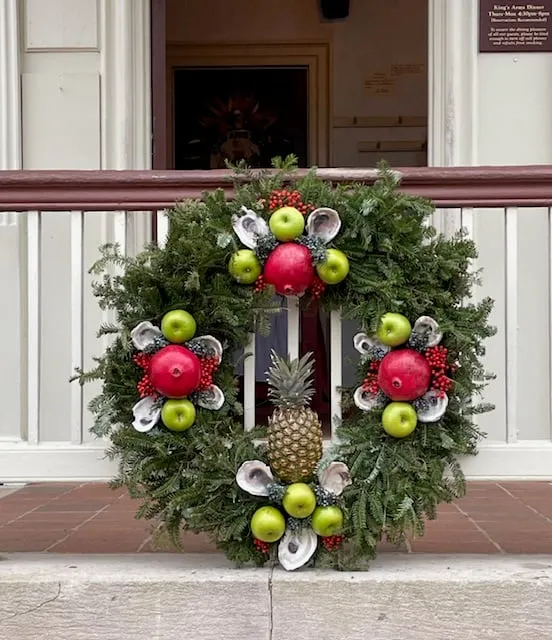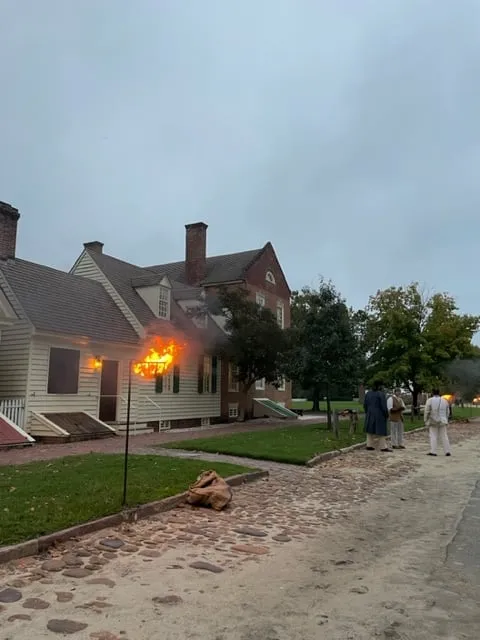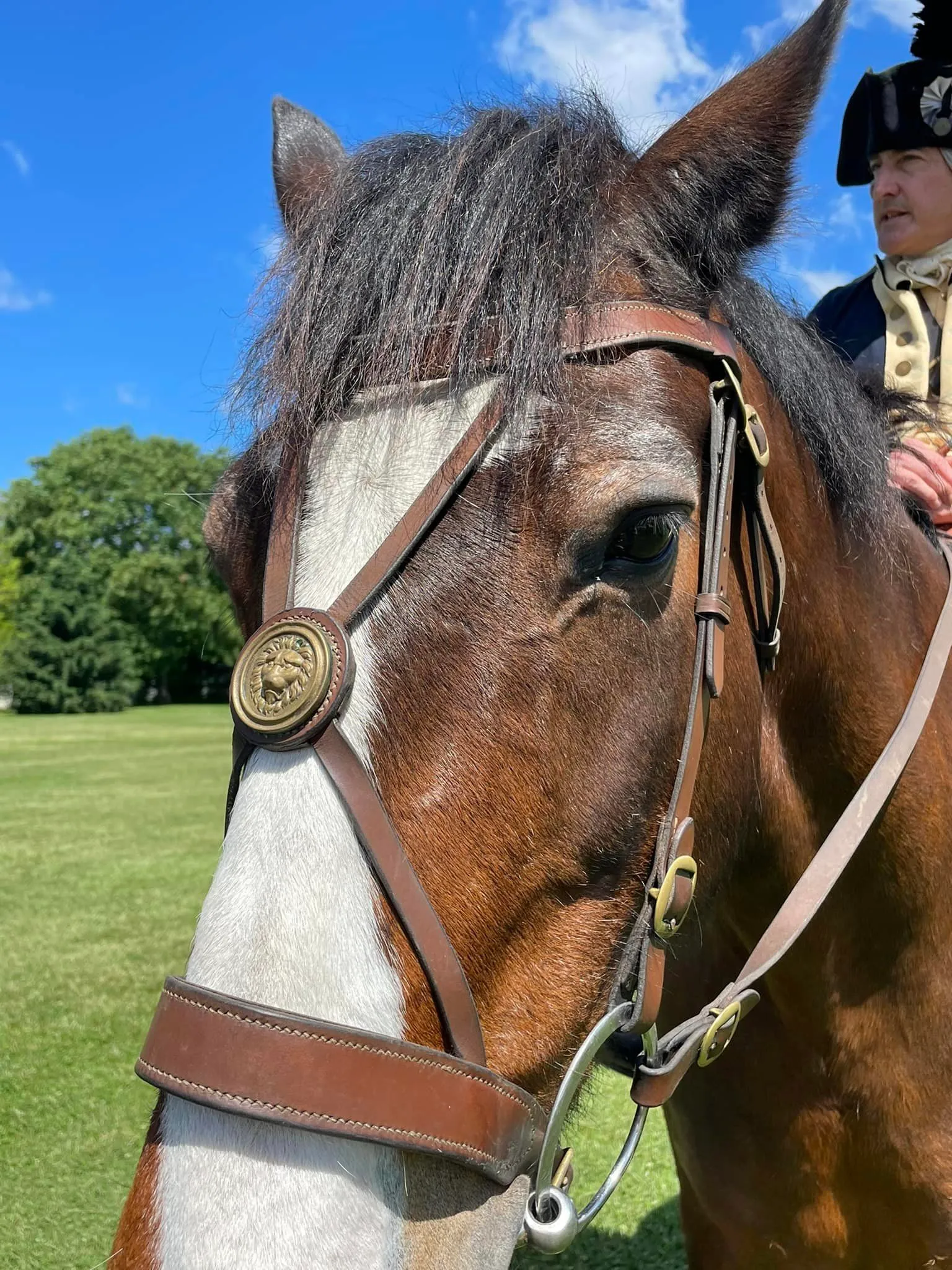More Than a Chief Justice: The Story of John Marshall’s Life Goes Beyond the Bench
Was John Marshall Chief Justice? Yes. And so much more.
Yes, John Marshall had a life before he was named Chief Justice in 1801 by President John Adams. He was more than a legal mind and political appointee. Born in September of 1755, passing away on July 6, 1835, there were almost 80 years of John Marshall, the father, the son, the husband, the soldier... and more.
On August 14, 2025, I got to walk the halls and enter the rooms John Marshall built in Richmond, Virginia. Special thanks and shout-out to Preservation Virginia's Elyse Werling for making it happen. She got me together with the John Marshall House's Site Coordinator and Bus Tour Operations Manager for Preservation Virginia, Geneva Weidhaas.
RELATED: Click here to open my interview with Elyse in a new tab.
Disclaimer: As a blogger, I use affiliate links sometimes! I may receive commission from purchases I share; it does not change your price but sometimes you might get a discount.
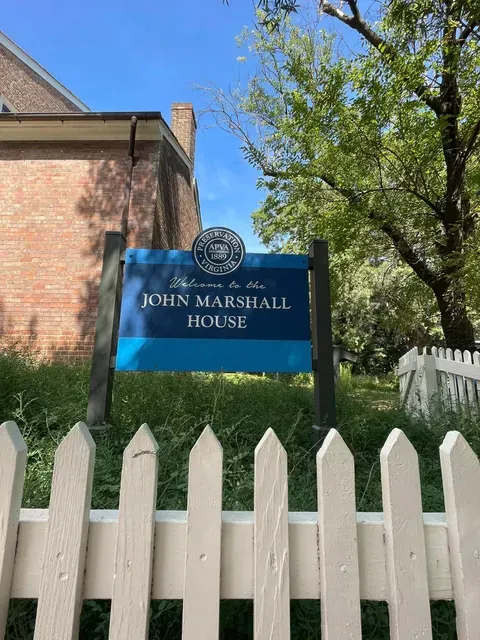
John Marshall House sign, Richmond, Virginia
What I knew about John Marshall before August 14th, 2025:
What I did know about John Marshall before visiting the John Marshall House (and doing some preliminary research) was truly limited. I'm putting those bits in bold font and, underneath, sprinkling in the facts that back it up-- or corrected what I thought I knew.
He was Thomas Jefferson's cousin.
I'd heard the connection between Thomas Jefferson and John Marshall was that they were cousins.
What I found out in more detail: they were connected through their mothers and the Randolph family line in Virginia. Marshall's mother, Mary Randolph Keith Marshall, hailed from Tuckahoe in Richmond, a place where Jefferson lived for a short time as a child.
Jefferson's mother, Jane Randolph Jefferson, was Mary's mom's first cousin. By my math this makes them second cousins... or is it third? Or second once-removed? Drawing ancestral dots is not my strong point- yet!
Side note--and you may know this-- the two men were at odds politically. If you want more on that, let me know- it's quite possible I'll make it a topic on the blog!

Mary Randolph Keith Marshall, John Marshall House
He was our first Chief Justice of the Supreme Court. FALSE!
I'm not defending my ignorance, but for some reason I always thought John Marshall was the first Chief Justice of our United States Supreme Court.
It turns out he was our fourth. Clearly, the legacy he left behind in shaping what we know to be our highest court in the nation, influenced my memory.
As the guy who truly served "for life," he left his stamp on the position, along with precedents that still survive today.
He presided over landmark cases throughout his career including Marbury v. Madison which truly set the foundation for judicial review (asserting some serious power).
Who were the first three Chief Justices?
- John Jay: 1789-95
- John Rutledge: 1795
- Oliver Ellsworth: 1795-1800
RELATED: Click here to see the full list of Chief Justice's on the Supreme Court's website.
He studied under George Wythe. (For three months)
If you have an interest in George Wythe, you'll eventually come across the fact he was an influential teacher and mentor to many of America's "founding fathers."
One of those men was John Marshall. Living in Williamsburg, I've seen many an homage to Wythe, but I especially love the one at the entrance of William & Mary's Law School. In this one, he is depicted standing next to Marshall.
You may know that George Wythe was the first professor of law at William & Mary and if you want to know more about him, click here to see a primary source you will love: Jefferson's personal notes about George Wythe, who he deemed his friend for life.
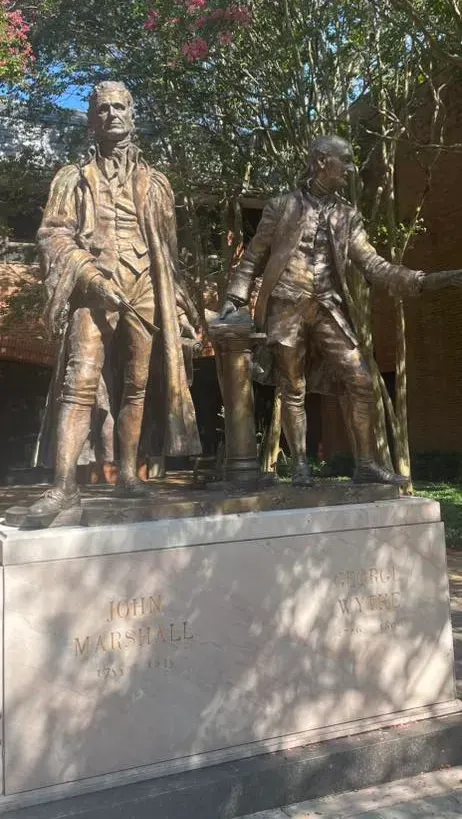
William & Mary Law School entrance
What I learned because Preservation Virginia invited me to the Marshall House:
John Marshall the soldier.
Looking at the time period, that he studied law under George Wythe and was appointed Chief Justice in 1801, it makes sense that he would've been actively involved in the Revolutionary War.
Marshall's father was at Yorktown while he was studying under Wythe. And Marshall himself, prior to heading to Williamsburg, had in fact served under General Washington at Valley Forge!
John Marshall the friend.
Connections not only humanize people of the past, but to me help organize the stories of the past in my mind. John Marshall's friendships offer up fabulous insight into his life.
Marshall was boyhood friends with James Monroe and that friendship lasted throughout their lives. They attended a local school together as children, but later served together in the Revolutionary War.
As Chief Justice, he was close with Bushrod Washington and Joseph Story. The friendship with Bushrod is notable in the next bit factoid about Marshall.
RELATED: Open this article from the Southeastern University's American Center for Public Leadership in a new tab, offering up James Monroe's story and the connection with Marshall.
John Marshall the author and historian.
John Marshall wrote lengthy books on the life of George Washington- and Washington's nephew Bushrod helped.
I mentioned that Marshall served under Washington with Monroe at Valley Forge, and later in life, decided to share the "Life of George Washington" to live on in our history.
One fantastic note: Marshall used PRIMARY SOURCES (such as Washington's own writings) to create this treasured reference on the first commander-in-chief.
And as for the value of Bushrod's assistance? Bushrod was Washington's nephew via his brother John Augustine, and one of his closest relatives. The man who served on the U.S. Supreme Court with Marshall from 1801 (Bushrod started three years prior) until his death in 1829 is also an historic preservationist worth knowing about.
Upon Washington's death, he left his papers to Bushrod.
RELATED: Read more about Bushrod on the Mt. Vernon website here.
John Marshall, the loving husband.
Marshall was married to his wife, Polly Ambler Marshall for over 40 years years until her death. She'd given birth to 10 children and is fascinating in her own right. Originally from York County, Virginia, her family moved to Richmond and were settled a short walk from where the John Marshall House stands.
Geneva shared some family lore about the love Marshall had for his wife.
Apparently, she was sensitive to sound-- living in a city this could be an issue! Family stories offer up John as a man who not only would take his shoes off upon entering their home, but laying hay in the street, to soften the noise made by horses and carriages passing by.
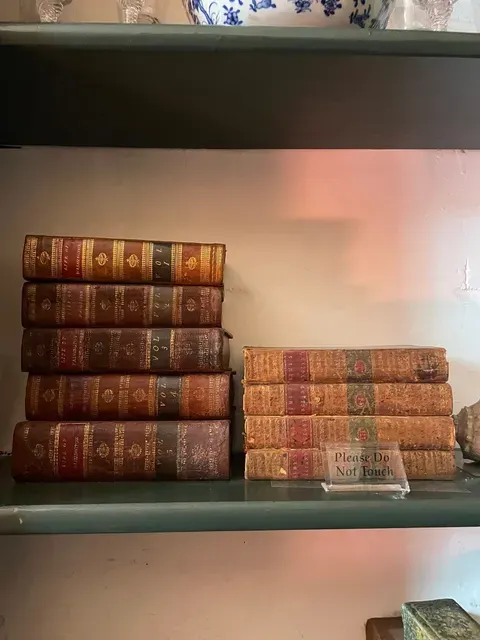
"Life of Washington" book series at the John Marshall House
More to come.
I'll be writing a more focused post on my visit to the John Marshall House. But also- you'll get some posts that go beyond the historic site. Believe it or not (LOL) I'm always jotting down notes and getting brain waves (explosions!) resulting from a site visit and the rabbit holes I jump down afterwards.
In the meantime, dig a little deeper into the people behind the history you may know with these posts on the blog:
- Patrick Henry and his Stamp Act Resolves.
- Thomas Jefferson and his Williamsburg influencers.
- George Washington - specifically his message regarding the future of America.
- Abigail Adams with a little Martha Washington and John Adams sprinkled in.
- The Marquis de Lafayette and the celebrations happening on the 200th anniversary of his tour of the United States as the guest of President Monroe, John Marshall's friend.
And further, if you're visiting an historic site- prep for it! Here's a post I wrote sharing 5 tips on how to simplify that prep.
Closing words from history.
If you've followed along, you know that letters and journal entries are my favorite primary sources to read. Finding this description of John Marshall the young soldier was pure gold. (I even asked Geneva her thoughts on the description and she confirmed it seemed a legit perception of Marshall).
Note: I'm breaking one paragraph into two for easier reading as my analytics show most of y'all are reading this on a mobile device!
Source: Founders on the Founders- edited by John P. Kaminski © 2008 University of Virginia Press, page 391
Philip Slaughter, Account of Marshall at Valley Forge
He was the best-tempered man I ever knew. During his sufferings at Valley Forge nothing discouraged, nothing disturbed him. If he had only bread to eat, it was just as well; if only meat, it made no difference.
If any of the officers murmured at their deprivations he would shame them by good-natured raillery, or encourage them by his own exuberance of spirits. He was an excellent companion, and idolized by the soldiers and his brother officers, whose gloomy hours were enlivened by his inexhaustible fund of anecdotes.”
Are you enjoying this free blog? Use my online tip jar and buy me a coffee:
There is a huge practical disclaimer to the content on this blog, which is my way of sharing my excitement and basically journaling online.
1) I am not a historian nor an expert. I will let you know I’m relaying the information as I understand and interpret it. The employees of Colonial Williamsburg base their presentations, work, and responses on historical documents and mainly primary sources.
2) I will update for accuracy as history is constant learning. If you have a question about accuracy, please ask me! I will get the answer from the best source I can find.
3) Photo credit to me, Daphne Reznik, for all photos in this post, unless otherwise credited! All photos are personal photos taken in public access locations or with specific permission.
